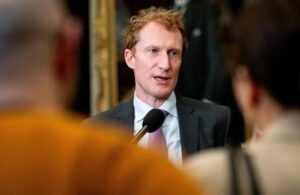How big is the problem of lonliness?

Key reviews about the economic costs of loneliness: Mihalopoulos et al., 2019 and McDaid, Bauer, & Park (2019). Both reviews point to a limited evidence base, a difficulty to compare results because of the heterogeneity of methods, and challenges associated with measurement practices. The vast majority of evidence comes from the UK (more than 50% of the papers found in both reviews).
Economic burden of loneliness
UK: Burden on health
- Fulton & Jupp (2015) estimate the cost of being chronically lonely of £11,725 per person over a medium term of about 15 years (or about £780 per annum per person), compared to people who are not lonely. Their work suggests about 40% of the cost occurs within the first 5 years of being lonely and around 20% is linked to residential care. In this research, people who were lonely reported 1.3-1.8 times higher rates of accessing healthcare services and were also at increased likelihood for developing health conditions requiring further care.
- To compare this figure, the annual cost of coronary heart disease per person in the UK is £597, for breast cancer it is £651, and for hypertension it is £807 (Public Health England, 2020).
- McDaid et al. (2021) estimate a £1700 net present value cost per person over 10 years (£170 per annum per person) or £6000 if only considering those reported being lonely most of the time. Being even slightly lonely at baseline was associated with more frequent use of GP services at follow-up. At each follow-up wave of the survey being lonely was linked to significantly higher rates of using community nursing and ‘meals on wheels’ services.
- McDaid et al. focus on 50+ in the UK, which equals approximately 25.75 million people (Statista based on ONS), of which 2 million are likely long-term lonely (Campaign to End Loneliness). This would mean an annual cost £340 million in the UK
- If we take the Fulton & Jupp annual cost estimate (£780), that would mean a total annual cost of £1.56 billion in the UK.
- For reference, and to make this number more comparable with some context, in 2021 the UK spent £11.4 billion on global aid. The cost of loneliness in the UK is just over 10% of the country’s global aid portfolio.
- A UK report by Peytrignet et al. (2020) supports the figure of £600 per year (2015 prices) or £672 (2019 prices) when looking at healthcare costs for those affected by loneliness most of the time.
- Notably this report offers higher numbers for the impact on wellbeing, such that the annual wellbeing impacts of loneliness are £6,429 for those reporting mild loneliness and at least £9,976 for those reporting moderate to severe loneliness. These estimates exclude health and productivity impacts.
UK: Productivity loss
- A report by the Co-op suggests a total annual loneliness cost to UK employers of £2.5 billion, which breaks down to
- £20 million in sickness absences
- £220 million in lost working days caring for someone who is ill due to loneliness
- £665 reduced productivity costs
- £1.62 billion in costs associated with increased voluntary staff turnover
USA
- In the States, Shaw et al. (examined older adults >65) and reported that socially isolated people incur higher annual healthcare costs of about $1643 more than people who have social networks of support. This was particularly salient for women who were both widowed and isolated compared to women who were not isolated with a cost increase of $3276.
- The US Census Bureau, there are about 56 million adults aged 65 and over in the USA. Conservatively assuming 20% are lonely, this would mean that there are 11.2 million lonely adults, and incurring additional healthcare costs of $18.4 billion linked to their loneliness.
Australia
- A report by Bankwest Curtin Economics Centre estimates a total annual cost of loneliness in Australia at $2.7 billion a year, equivalent to $1,565 for each person who becomes or remains lonely. A greater share of the overall costs of loneliness comes from impacts on women (59%). The total amount is broken down in:
- $863 million in greater incidence of smoking
- $833 million in higher number of GP visits
- $379 million associated with greater physical inactivity
- $344 million in excessive alcohol consumption
Like Our Story ? Donate to Support Us, Click Here
You want to share a story with us? Do you want to advertise with us? Do you need publicity/live coverage for product, service, or event? Contact us on WhatsApp +16477721660 or email Adebaconnector@gmail.com






